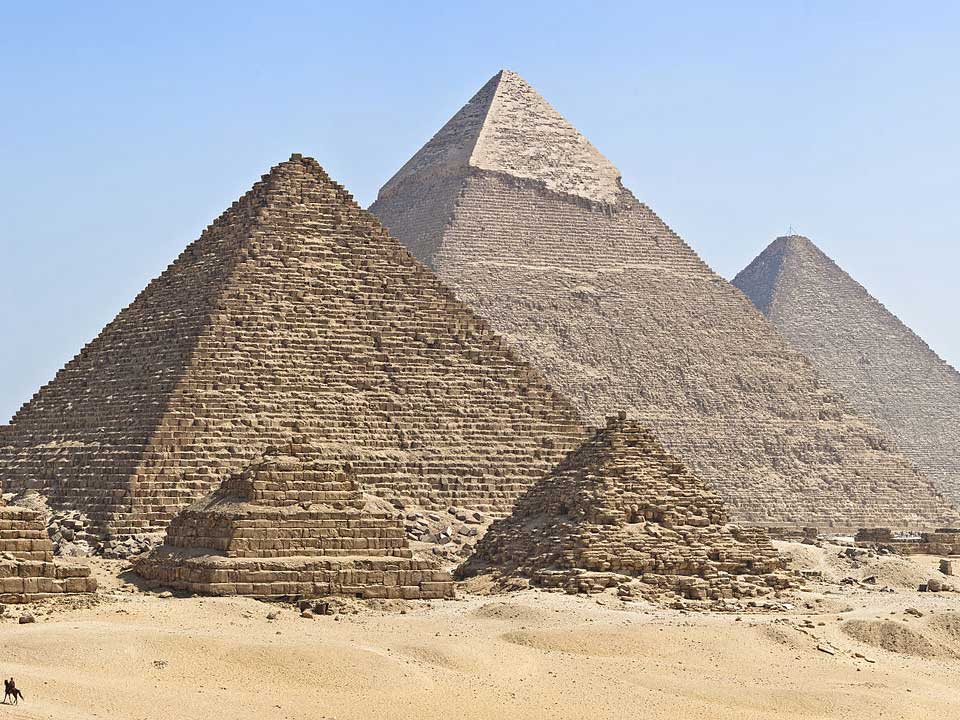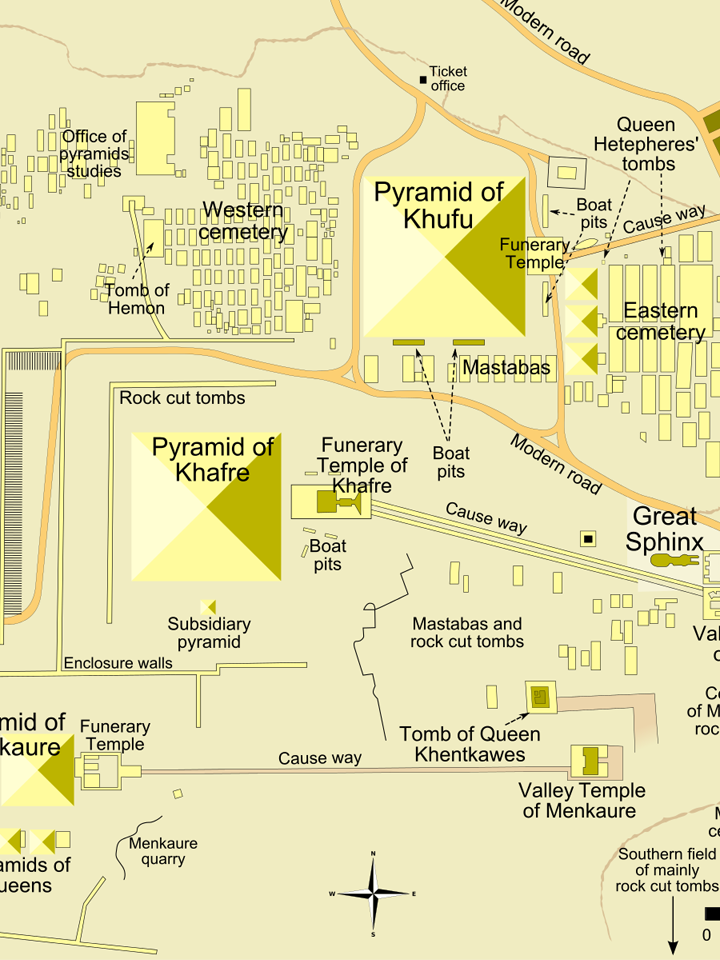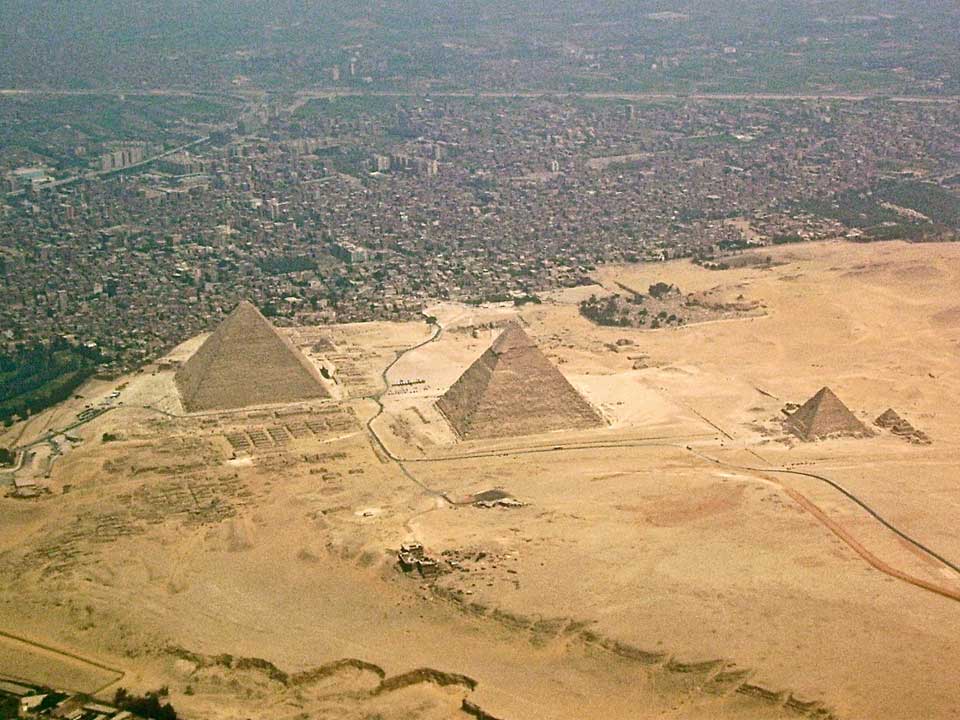The Giza Pyramid Complex



Quite literally building on Sneferu’s success, his son, Khufu, and his descendents, Khafre and Menkaura went on to generate some of Egypt’s most iconic architecture: the Pyramids of Giza.
The first to be built is the northernmost structure, known as the Great Pyramid. Originally standing 147 meters over the Giza plateau, with a footprint of 230 square meters, Khufu’s pyramid was the tallest structure in the world for nearly 3800 years. The two-ton limestone blocks used in its construction were quarried nearby, then dragged up ramps to be set in place. Some estimates state that blocks were being laid every two to three minutes. Still, the process took around 27 years to complete.
Next to be built was Khafre’s pyramid. It’s smaller than its predecessor–it’s only 137 meters tall, with a base of 215.5 square meters–though it sits on slightly higher land, making it appear the same height. Also similar to the Great Pyramid, it too was once covered in a smooth outer casing that was removed and repurposed over time.
Menkaura’s pyramid, the southernmost of the three, is much smaller than the two that came before it, with approximately one-tenth the mass of the Great Pyramid. It’s possible this was related to a financial decline of some sort, and indeed, the Fourth Dynasty ended pretty soon after his death. Menkaura died before his pyramid could be completed, and his son had finished the job.
For much of history, the prevailing theory surrounding the construction of the pyramids has been that they were built using the labor of enslaved individuals–an idea that has long been proven false.
Ancient Egyptian society was roughly feudal; the pharaoh would allow the settlement of his land in exchange for the labor needed to work it–and, of course, for a cut of the fruit of such labor. The construction projects for large monuments like the Pyramids of Giza not only resulted in an ornate tomb for the king, but also stimulated the economy and provided work for everyday citizens. Skilled artisans, laborers, bakers, and more were called up to focus their efforts on construction in a form of mandatory, conscripted service to the state.
Extensive towns and cemeteries belonging to the workers have been excavated around the pyramids, and some nobles constructed mastabas or small pyramids of their own nearby to share in the glory of the pharaohs. Some theories even indicate that the shift towards monumental architecture points towards an interest in making royalty more accessible to the common person; instead of private, sequestered tombs, pyramids were incredibly public. Pyramid-building gave the common person the ability to contribute to the greatness of the king, and reap some of the financial benefits too. It also, of course, reinforced the king’s power and wealth in the minds of the people.

At-A-Glance
- The three pyramids in Giza were built by three different 4th Dynasty kings: Khufu, Khafre, and Menkaure.
- Smaller pyramids, called Queens’ Pyramids, as well as mastabas, cemeteries, and workers’ cities surround the three main pyramids.
- While slaves did exist in Egyptian culture, evidence has long suggested that the pyramids were likely built by well-paid artisans and laborers.


